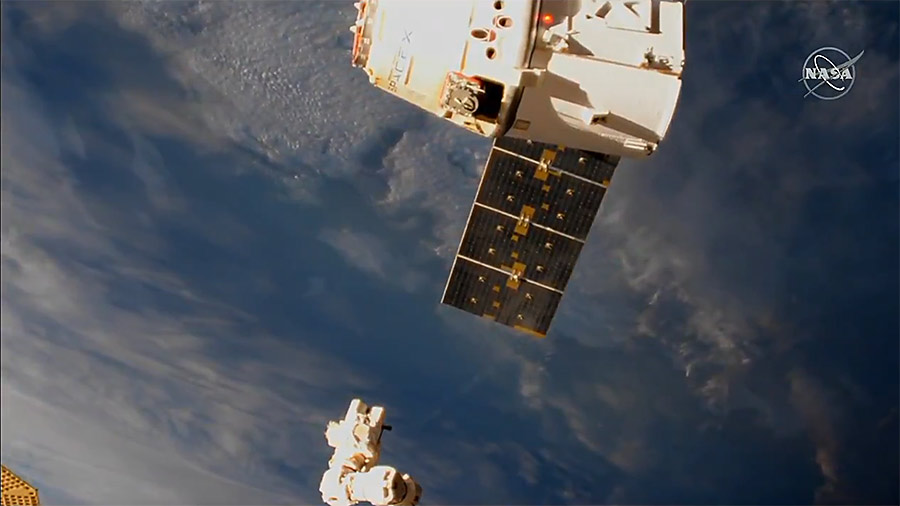
The SpaceX Dragon cargo spacecraft released from the International Space Station at 5:05 a.m. EST after flight controllers in Houston delivered remote commands to the station’s Canadarm2 robotic arm. Expedition 61 Station Commander Luca Parmitano of ESA (European Space Agency) will back up the ground controllers and monitor Dragon’s systems as it departs the orbital laboratory.
Next up, Dragon will fire its thrusters to move a safe distance from the station, then execute a deorbit burn as it heads for a parachute-assisted splashdown around 10:41 a.m. in the Pacific Ocean southwest of Long Beach, California. The splashdown will not air on NASA TV.
Some of the scientific investigations Dragon will return to Earth include:
Tiny Radiation Resistors
Rotifer-B1 examines the effects of spaceflight on tiny aquatic animals, called rotifers, which are found in freshwater ecosystems and soil and are highly resistant to radiation on Earth. The investigation specifically looks at the metabolism and genome of the rotifer Adineta vaga to determine whether they have similar adaptation mechanisms in microgravity.
Mice in Space
Rodent Research-19 examines myostatin and activin, molecular signaling pathways that influence muscle degradation, as possible targets for preventing muscle and bone loss during spaceflight and enhancing recovery following return to Earth. This study also could support the development of therapies for a wide range of conditions that cause muscle and bone loss on Earth.
Finding the Perfect Solution
On Earth, our bodies deal with low-level radiation through a naturally occurring protein that helps our body safely process it. The Growth of Large, Perfect Protein Crystals for Neutron Crystallography (Perfect Crystals) study, aims to help scientists find a way to deal with the problem of radiation during long-duration spaceflight missions using the same protein that is already at work in our bodies.
Convection and Crystallization in Microgravity
The Polymer Convection study examines the effects of gravity on formation and crystallization of Broadband Angular Selective Material (BASM), an optical material with the ability to control the reflection and absorption of light. BASM has applications in polymer packaging, optical films, solar power and electronic displays.
These are just a few of the hundreds of investigations providing opportunities for U.S. government agencies, private industry, and academic and research institutions to conduct microgravity research that leads to new technologies, medical treatments and products that improve life on Earth. Conducting science aboard the orbiting laboratory will help us learn how to keep astronauts healthy during long-duration space travel and demonstrate technologies for future human and robotic exploration beyond low-Earth orbit to the Moon and Mars.
Learn more about station activities by following the space station blog, @space_station and @ISS_Research on Twitter as well as the ISS Facebook and ISS Instagram accounts.

A good video for The Space X Dragon cargo release…..
I saw the ISS this morning and also something flying with it….went on line and it was the Dragon leaving….I am on Cape Cod MA….most fascinating….Jim
A lot of these are interesting research projects relevant for mankind, and also to prepare man for long distance flight away from the safety of mother earth.
Does private industry pay for the research? If an individual has a research question requiring low gravity research would NASA fund the research if it meets some sort if criteria?
Thanks any way
Public-private partnerships are a key component to driving innovation and national leadership. With the potential to address a wide array of modern challenges from technology development to infrastructure modernization, and from education to the economic development of space, public-private partnerships unlock new possibilities unavailable when we rely solely on public or private investment.
https://www.issnationallab.org/research-on-the-iss/public-private-partnerships-in-space/